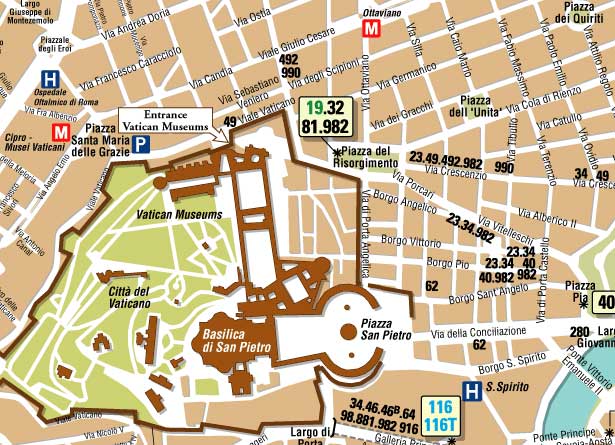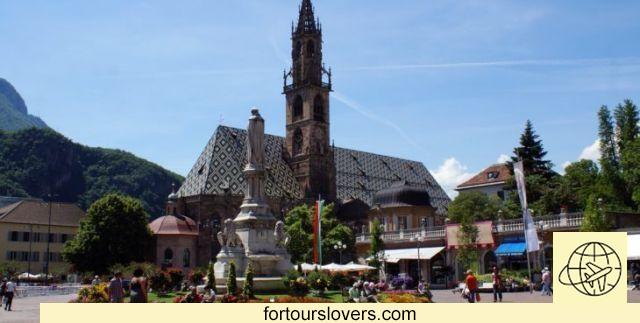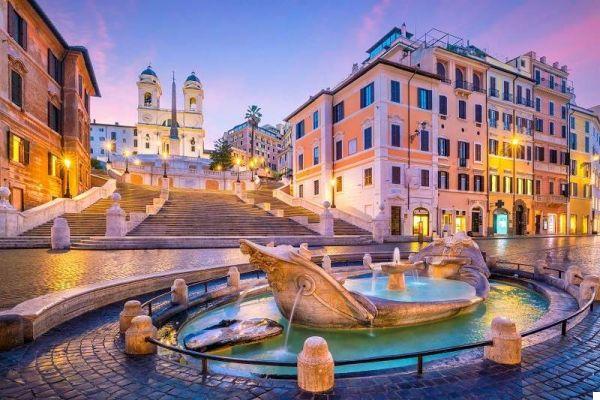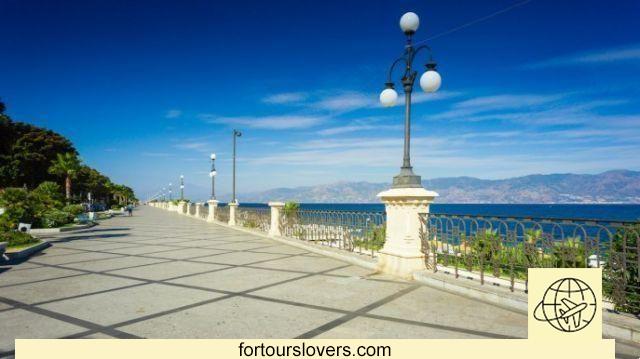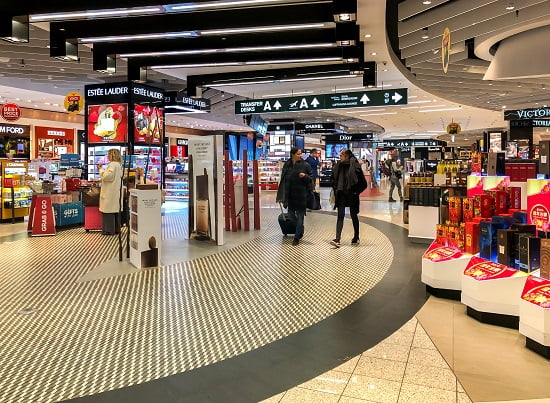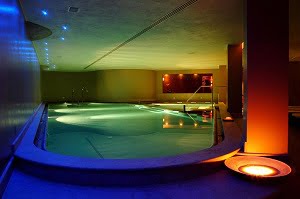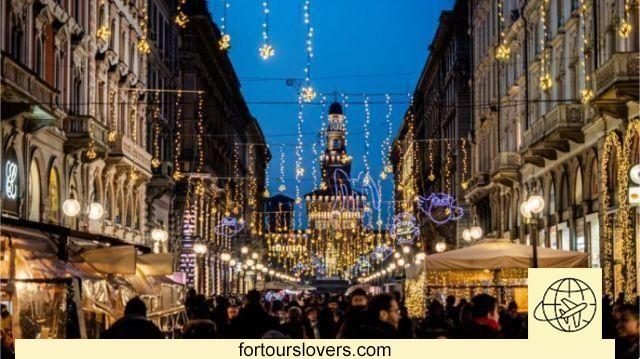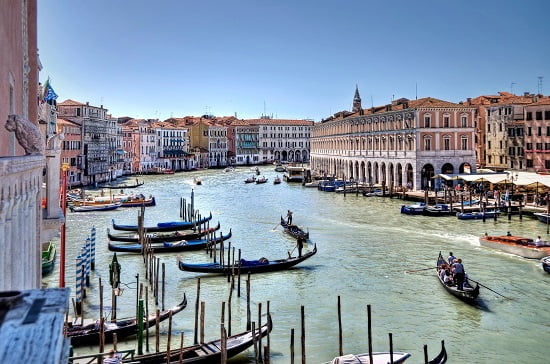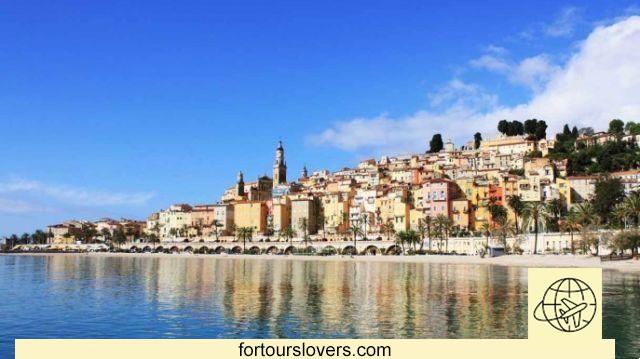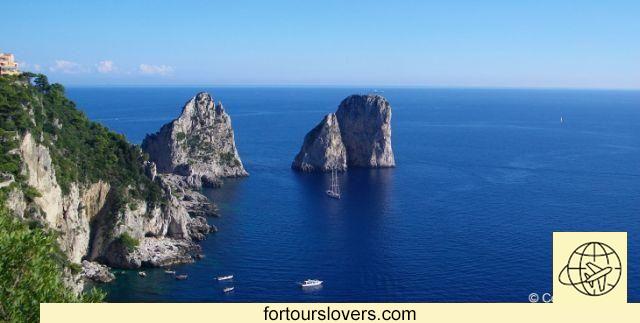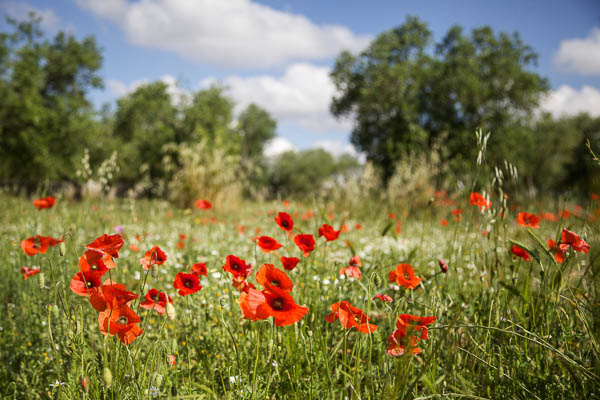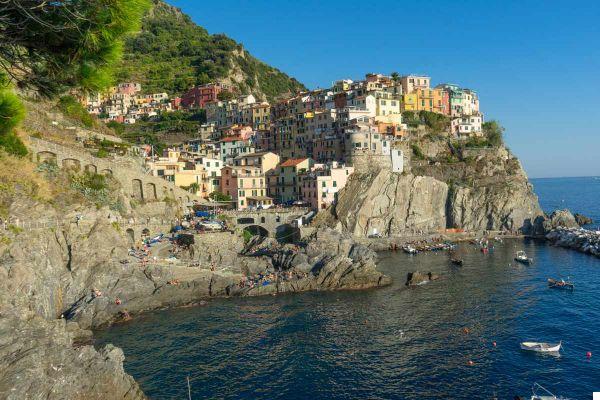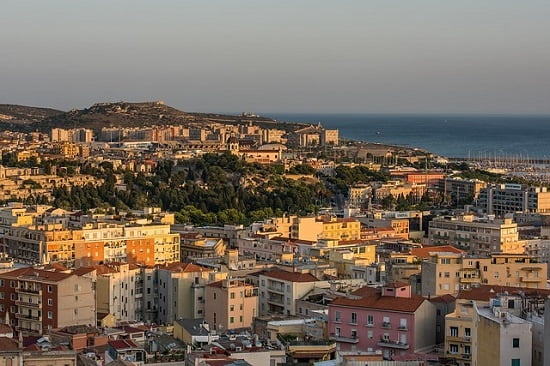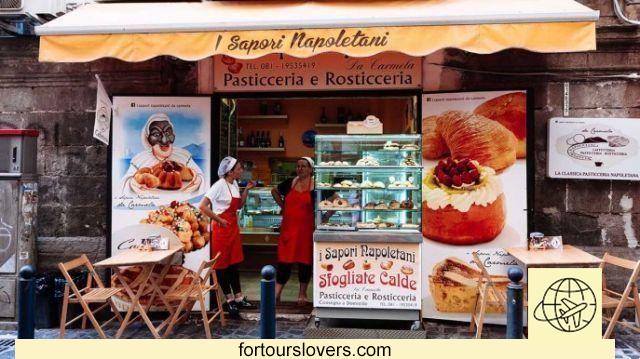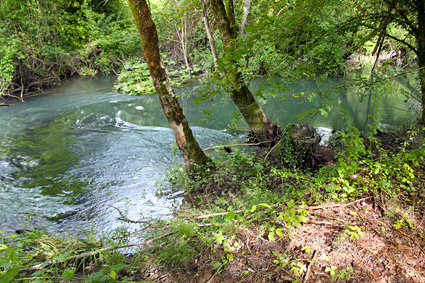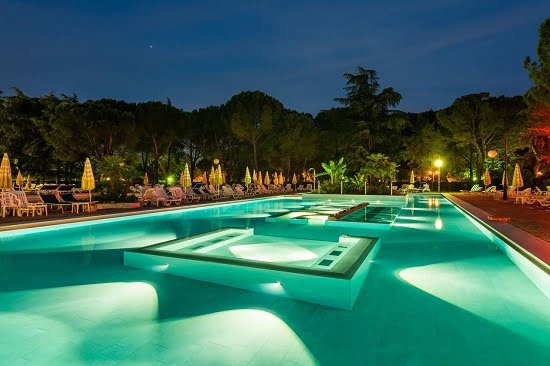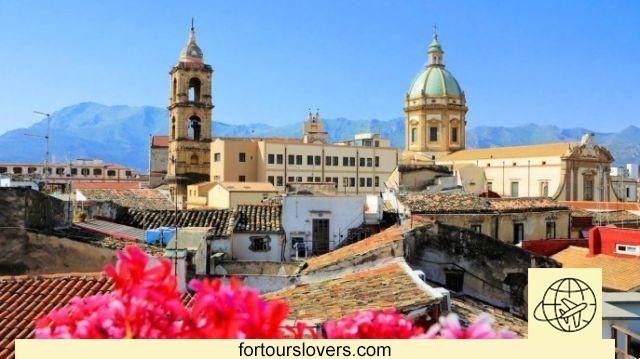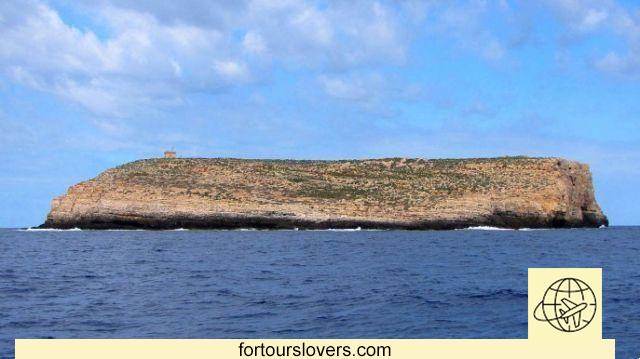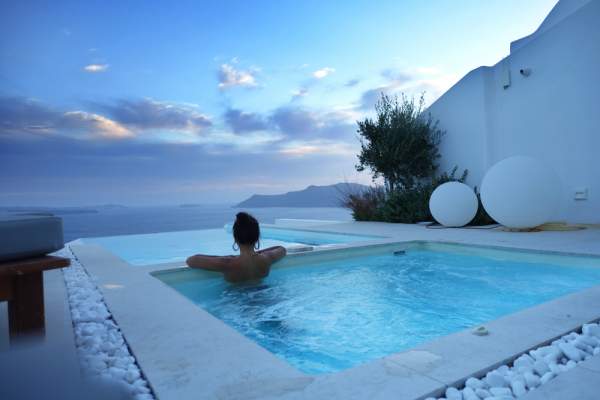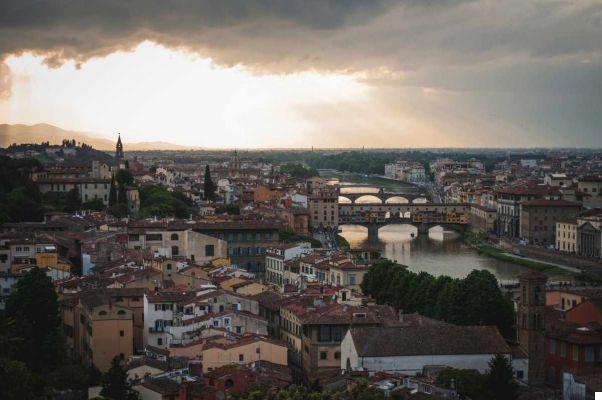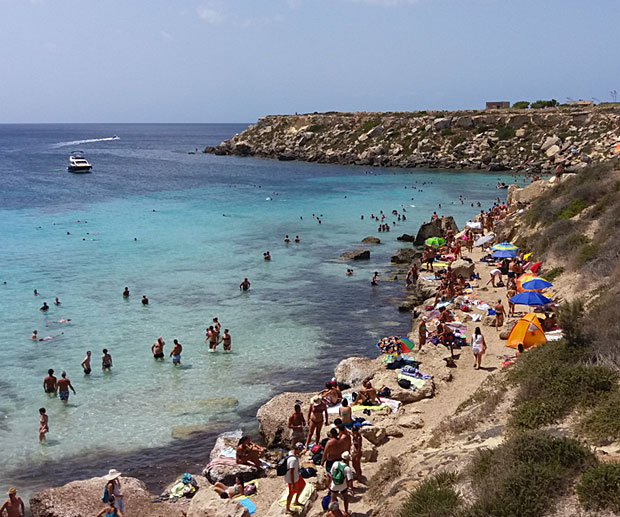Complete guide to visit the Sistine Chapel without queues, and why you should visit it.
The Sistine Chapel is one of the more than 1,000 rooms that make up the Vatican' s Apostolic Palace and is also its most famous treasure. The construction of the building took place between 1473 and 1481.
It is called Sistina because it was Pope Sixtus IV who ordered the restoration of the room in 1473. But it was Pope Julius II who commissioned this work to Michelangelo almost thirty years later.
The Sistine Chapel is not famous for its architecture, but for the frescoes that completely cover the walls and ceiling. Among the most popular are the frescoes painted by Michelangelo; "The Creation of Adam" and "The Last Judgment". But other important artists such as Botticelli and Perugino also worked on the decoration of the chapel.
Today, the church is used for the Cardinal Assembly when a Pope is elected.
But how to visit the Sistine Chapel, how to buy tickets and what rules to observe during the visit?
Why should you visit the Sistine Chapel?
Where is the Sistine Chapel and is it in Rome? Answer NI, that is, the Sistine Chapel and the Vatican Museums are located inVatican City. Vatican City, however, is located in the center of Rome and, therefore, it is often said that the Sistine Chapel is in Rome.
Along withSt. Peter's Basilica, the Sistine Chapel is the most famous site in Vatican City. This is whereMichelangelo painted his masterpiece,The Last Judgment, over 500 years ago. Right next to the Sistine Chapel, the Vatican Museums showcase the huge collection of art accumulated by various popes over the centuries.
If you love art, you cannot miss a visit to the Sistine Chapel and the Vatican Museums because they will be among the most interesting visits of your entire life.
PRO TIP: to learn how to get your bearings and familiarize yourself with the city, you might want to take part in afree walking tour. Here arethe best free tours in Rome!
The history of the Sistine Chapel
The Sistine Chapel is the main chapel of theApostolic Palace, the official residence of the Pope. It was built on the base of a pre-existing papal chapel dated 1368. Pope Sixtus IV initiated, in the 70s, a work of recovery and monumentalization of the urban fabric of Rome during which the foundations and walls of the old chapel were used to build a new one, thecurrent Sistine Chapel.
As proof of the facts can be noted some irregularities in the plant, this because the ancient medieval walls reused and not demolished. Originally known as theMagna Chapel, it owes its name to Pope Sixtus IV, who initiated the restoration works in 1477 directed by Giovannino de 'Dolci. The restorations carried out included the cladding of the building in brick curtain, reinforcement by footing and the construction of new chapels.
The Sistine Chapel was built as a private chapel, inside which the most important ceremonies held during the Holy Year took place.
The area also houses theConclave, during which the new pontiff is elected.
The chapel is of grandiose dimensions: 40 m long, more than 13 m wide and almost 21 m at the top of the vault. The interior of the chapel is developed around a single nave topped by a barrel vault lowered with pendentives and lunettes in each of the twenty arched windows. The floor, in inlaid
The polychrome marble is defined in "opus Alessandrinum".
The chapel space is divided into two parts by a marble barrier, which served to divide the chapel into two areas: one part reserved for the clergy and the other for the faithful.
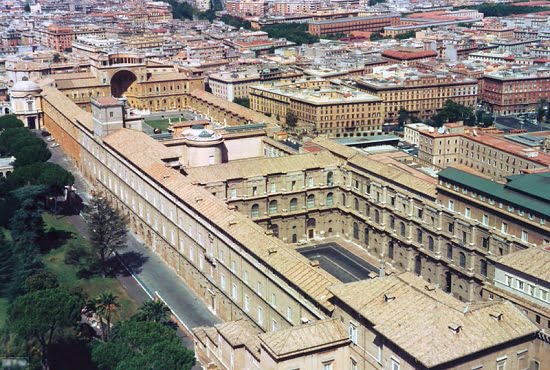
What to see in the Sistine Chapel: the Frescoes
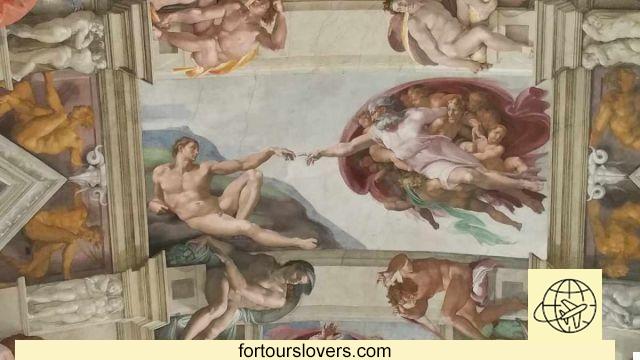
To make the Sistine Chapel such an attractive and evocative place are the many incrediblefrescoes that adorn it.
On October 27, 1481, the most famous Tuscan and Umbrian artists of the time were called upon to fulfill the prestigious task of decorating the side walls of the Vatican's important new hall with ten narratives taken from the Testaments. We are referring to Sandro Botticelli, Cosimo Rosselli, Signorelli,
Domenico Ghirlandaio, Perugino and Pinturicchio.
The famous andlong admiredoriginallydepicted a simple blue sky dotted with golden stars, painted by Pier Matteo d'Amelia and maintained this appearance until Pope Julius II della Rovere commissioned Michelangelo to redecorate the vast surface.
This request was later transferred, probably, to the damage caused by the serious problems of a static nature that affected the Sistine Chapel from the early years of his pontificate. In fact, in May 1504 a long crack opened up in the vault, so Bramante was commissioned to remedy it and shortly thereafter Michelangelo was called in for the new pictorial decoration.
Michelangelo worked on the vault from 1508 to 1512. The peculiarity was that the artist was left free to work alone on the realization of the vault. And now it is only theLast Judgment painted byMichelangelo that attracts thousands of visitors every day.
The cycle of frescoes iconologically completesStories of Jesus andMoses realized by the above-mentioned painters who had already begun the decoration of the chapel since 1481-1482, at the time of Sixtus IV; Michelangelo, therefore, painted on the vault the stories of humanity "ante legem", that is, before God sent the Tablets of the Law to Moses.
1 - The ancestors of Christ
Starting from the background we observe that in the candles and lunettes we can find theAncestors of Christ, except in the corner pendentives, which contain four stories of Israel, the Torture of Haman, the Bronze Serpent, Judith cutting off the head of Holofernes and David and Goliath.
For example, the candle segment above the bezel ofJesse, David and Solomon was painted by Michelangelo in one day, except for the lower right corner.
The subject in the center is an enigmatic female figure, portrayed seated on the ground in a frontal pose while gazing outward in absolute stillness.
The bust is wearing a tight green tunic that reveals the sculptural musculature typical of Michelangelo's figures. He holds his feet intertwined and his legs are covered with a light purple cloak. One hand rests on the legs, while the other touches the cheek with the back, thus highlighting the enigmatic gaze that is completely alien to the two figures - a man and a boy - just sketched in the darkness.
A curiosity concerns the technique with which the candles were made, which is the "dusting". This technique consists of drawing the life-size representation on a preparatory cardboard, after which the contours are pierced densely with a pointed object. This technique allows you to bring a design to several surfaces.
2 - Prophets and sibyls
The huge figures surrounding the vault are an alternation ofProphets and Sibyls, i.e. those who foretold the birth of Christ.
They are seated on monumental thrones and alternate on the long sides, while the figures ofZacharias and, on the altar, ofJonah to whom belongs the preeminent position as a prefiguration of Christ. THEDiviners can be recognized thanks to the inscription on the plate below and are those of
They first felt the coming of the Redeemer.
The figure ofthe prophets and sibyls are of fundamental importance since they testify to the unceasing confidence of humanity in the expectation of redemption: the former anticipated the coming of Christ for the people of Israel, the latter are represented here by their talent as soothsayers.
They are pagan figures and their presence sends a strong message: redemption belongs not only to the chosen people, but to all humanity.
3 - The nine episodes of Genesis
Inine episodes of Genesis that are represented in the vault are ideally divided into three groups and concern, theOriginof the Universe, Dell'Man andMan.
In the first group are theDivision of light from darkness, theCreation of stars and plants. In the second group, theDivision of the waters from the earth andCreation of the animals, in these frescoes God is the only protagonist.
In these three scenes related to theCreation of the world dominates the representation of the Eternal in flight over unlimited spaces, wrapped in a large pink mantle. In the Separation of Light from Darkness, God, who alone fills almost the entire stage, floats engaged in the generative act that is the basis of the world.
His figure is seen from below and spinning, arms raised as he shapes the chaos, originating waves of light in the midst of the coming darkness.
In the next scene we can see howthe creation of stars and plants stand out against a bright background. The two creations are represented in an essential way. God is depicted twice creating the stars by opening his arms with a peremptory gesture (right) and giving life to the plants on Earth by extending his right hand (left). His gestures are powerful and theatrical. A demonstration of this power is the idea of the rushing wind that swells the Lord's curtains and ruffles his hair and beard.
The sequential order of the biblical text would see theSeparation of the earth from the waters as a second story, set on the second day, but the succession was broken by reserving a larger panel for the Creation of the stars and plants (third and fourth day of creation).
In the Separation of the earth from the waters, God flies over the blue-gray expanse of the waters, accompanied by his angelic court behind his haloed mantle. The sky behind him is clear, limpid, which is released from the figure of God leaning toward the viewer open in an imperious gesture of outstretched arms.
The figure is foreshortened and seems to scrutinize the viewer from all directions.
In the second group are theCreation of Man, theCreation of Woman and theExpulsion from Paradise.
TheCreation of Adam is one of the most important works in the history of art.
The fresco was executed in 1511. Michelangelo needed 16 days of work to complete it.
The background is clear, natural, naked like the dawn of a new beginning.
The image unfolds around contrasts: Adam, awake and half stretched out on the edge of a grassy slope, stretches out one arm towards the Creator, as if he wants to rise. As God stands before him surrounded in confidence by a group of incredibly lifelike angels who support him with effort. the
Moreover, Adam's face, young and adolescent, contrasts with that of God, who has gray hair and a gray beard, symbol of wisdom.
This fresco is rich in symbolism. It is enough to stop at the approach of the two fingers that does not lead to contact.
This could underline the impossibility for man to reach divine perfection. Another contrast, Adam's finger is trembling and insecure, compared to God's which is a metaphor for the vital spark that the Eternal passes on to his creature.
Finally, it can still be noticed that the divine group is wrapped in a large reddish mantle, which besides giving dynamism to the scene may want to represent a brain, as a symbol of intelligence, of the concept of "idea".
"From Adam's shore he brings out the woman, who came with joined hands, and bowed to God, bowing with sweet action, it seems that she thanks him, and that he blesses her"Ascanio Condivi, Life of Michelangelo Buonarroti.
The painting of theCreation of Eve is located, more or less, in the central part of the Sistine Chapel.
For art historians, the central position of the scene is explained by the symbolic interpretation of the episodes in relation to the New Testament: the figure of Eve traditionally appeared as a symbol of Mary, which in turn symbolized the Church, understood as a theological tradition.
Adam appears naked and asleep in the lower left corner, with his torso leaning against the tree. Eve, also naked, appears attentive and vigilant, seeming to emerge from Adam's rib, driven by the peremptory gesture of the Creator standing in front of her.
The figure of the Eternal in this scene is represented here standing, while in the other panels he always appears in flight. The raised arm of the Eternal seems to have indicated to Eve a well-defined direction, that is, the upward direction. The new creature, already emerged from the sleeping Adam, is gradually emerging with folded hands and a look of gratitude and thankfulness, seeking divine blessing.
At the conclusion of the Adam and Eve cycle we find theThe original sin man and theExpulsion from the earthly paradise. In the center of the panel is the tree of knowledge, around which is wrapped the sinuous and seductive form of the serpent, in the guise of a beautiful woman. Adam is grasping
A fruit, while Eve gently touches the hand of the woman/serpent. Before the fall, Adam and Eve are depicted as young and handsome, carefree, embracing.
But when God, through his avenging angel, banishes them, they cower in shame and their faces age and wither.
In the third group isNoah's Sacrifice, theGreat Flood and TheDrunkenness of Noah(the first fresco created by Michelangelo).
The scene shows the sacrifice Noah made to make peace with God after being saved by the ark from the flood. The fresco shows in the center the sacrifice towards which the attendants converge with the animals on their backs: two rams, a bull, two horses, an elephant, barely distinguishable in the background.
The patriarch wears the same red tunic that is also seen in the background scene of Noah's Drunkenness. On the right we see the old woman in profile, perhaps the work of collaborators, like the young woman on the left helping to light the fire.
In the foreground we see a boy carrying a bundle of firewood and a young man who, sitting naked on a freshly slaughtered ram, takes the entrails of one animal from the hands of another to make predictions.
Another naked young man, instead, comes from behind with his head turned towards the opening with the fire inside the altar, to control it as if it were a furnace and perhaps blow it to stir it.
InGreat Flood some sixty relatively small figures are depicted. The characters, often nude, are grouped and distributed along diagonal lines that accentuate the depth of perspective, giving drama to the dense scene of bodies. According to the interpretation of the episode provided by Ugo
Since San Vittore, humanity has been divided into three human groups, each visible in Michelangelo's fresco.
The righteous find a place in the ark (metaphor for the Church) and there find Salvation; the reprobate try to attack it; the rest of the people, though not evil, are lost because of their attachment to the things of the world, which will bring their end.
The latter are the group of people in the foreground who seek refuge on dry land, conspicuously carrying their possessions: some try to climb trees, others carry their children or relatives on their backs.
Also included are the figures on the islet to the right, where the moving group of the elderly father stands out, carrying the exhausted body of his son in his arms with titanic strength and great effort. The Holy Spirit descends on the boat and protects it, illuminating the face of Noah who has bent down to observe it with hope.
To complete the cycle dedicated to Noah, Michelangelo represents theScene of Drunkenness in an interior environment, well illuminated by the large opening on the left. The patriarch, naked, drunk and asleep, is lying on a low and fragile bed, a short distance from the floor by boards on the lower margin.
At his side he has a jug and a bowl. To the right appear his sons, also completely naked, who are about to care for their father by attempting to cover him with a cloak. Cam, the middle figure, pointing to the drunken father makes a mocking gesture, so that when Noah wakes up he will curse his lineage.
Since the time of St. Augustine, Noah's drunkenness is symbolically interpreted as that of the "Christ mocked". The vineyard on the left, in which Noah himself works, was considered a symbol of the Incarnation.
Surrounding them are the famous Ignudi that Michelangelo painted in the corners of the central panels. They are depicted as classical sculptures and represent the glorification of the human body. The nude bronzes, with their backs to the viewer, seem to turn their gaze upwards, like those who soar the
opposite candle.
4 - The Last Judgment
Last but not least, a description of theLast Judgment.
It looks like a whirlwind of souls in the ultramarine blue of the divine sky.
Paradise welcomes the ascent of the blessed while the damned fall towards hell.
In an elevated and central position is Christ with the Virgin Mary. With his right hand raised, the Redeemer calls the blessed, while with his left hand he destines the damned to the depths of Hell.
The Virgin, on the other hand, is painted in a slightly lower position than Jesus and turns her gaze to the left. Her expression is one of suffering and demeanor, the Virgin appears serene. Jesus, depicted half-naked with the physique and bearing of a classical hero, to the sound of the trumpets of the Apocalypse, awakens the souls and separates the blessed from the damned.
Inside the two upper lunettes the angels carry the instruments of the passion: the cross, the crown of thorns and the column of the flagellation. Some characters of the Old Testament are arranged in a crown around the figure of Christ: apostles, prophets, heroines, sibyls and patriarchs. In addition, saints, martyrs and virgins appear.
In the lower band, divided into five sectors, there are angels with trumpets in the center with the sacred scriptures. In the lower left part the resurrection of the dead is represented while in the upper left part the ascension of the blessed is always represented. In the upper right part, the damned are thrown into the spirals of hell in a grave position.
TheLast Judgment was composed in old age, it is noticeable that its colors have changed and are now earthy and not very saturated, as if to express the progressive pessimism that oppressed it.
The vision that emerges from Michelangelo's Last Judgment is profoundly different from the classical and confident mood of the early Renaissance.
The psychological climate that emerges from the fresco is one of anguish and terror, a vortex that removes all certainty.
The description presented here is approximate and focuses on Michelangelo's frescoes, but as mentioned above, many other great artists were involved in the decoration and some of their works are still visible, such asPerugino'sDelivery of the Keys, theVocation of the First Apostles by Ghirlandaio orBotticelli's Trials of Christ.
Ticket prices for the Sistine Chapel
Many visitors are unaware of this: the Sistine Chapel is part of theVatican Museums. This means that it cannot be visited alone, but only as part of a visit to the Vatican Museums. Tickets purchased for the Vatican Museums are also valid for the Sistine Chapel.
Therefore, the following rates apply to the Vatican Museums:
- Adults - 17 € on the spot (26 € ticket without queuing online).
- University students with accreditation - 8 €.
- Children from 6 to 18 years old - 8 €.
- Children under 6 years old - free
Buying the ticket at the ticket office is certainly cheaper, but this option requires a lot of waiting time, especially during high season, when it can take 2 to 3 hours before you can enter the museums.
Skip-the-line tickets for the Vatican Museums and the Sistine ChapelTickets, guided tours and how to avoid the lines
Can you only visit the Sistine Chapel? No, you cannot visit the Sistine Chapel alone. The Sistine Chapel is part of theVatican Museums and as such can only be visited with the Vatican Museums.
Soto be able tovisit you need to purchase a ticketfor the Vatican Museums.
No additional tickets are required to visit the Sistine Chapel. Anyone trying to sell you one outside of the Vatican Museums or St. Peter's Basilica is screwing you.
Buy tickets first. The lines can be endless.
Here I've tried to group the best guided tours, where to buy skip the line tickets online and how to skip the huge lines.
SKIP THE TICKET LINE
If you want dispassionate advice, take one.guided tour in English:
->THIS guided tour in English is very popular(book well in advance - includes the Vatican Museums and Sistine Chapel).
They also existseveral packages that include various options in terms of multiple stages and driving, physical or digital. The ticket includesfree checkroom.
- GUIDED TOUR of the Vatican Museums, Sistine Chapel and St. Peter's(with Skip the Line access)
- Vatican, Colosseum, Roman Forum & Palatine Hill (HIGHLY RECOMMENDED)
- Rome: Vatican Museums, St. Peter's Basilica, Tombs of the Popes- very sold out, does not include entrance to the Dome, but you can buy it if you want to go there (HIGHLY recommended)
TheALL CARD includes the Sistine Chapel, Vatican and St. Peter's Museums,Colosseum and many other attractions in Rome (unlimited transportation included). If you want to visit Rome in my opinion, it is very convenient.
Waiting time
There is not a very long waitat the entrance to the Sistine Chapel, except in high season. However, expect a very long wait timeat the entrance to the Vatican Museums.
During peak periods (in high season, in December and weekends), it is not uncommon to have to wait 2 or 3 hours in line. A wait that can be easily saved by booking your ticket in advance.
Sistine Chapel Opening Hours (2022) - Visiting Hours
CAUTION
Over 5 million visitors come to the Vatican Museums each year and, of course,EVERYONE wants to visit the Sistine Chapel: you'll be like a canned sardine!
With that in mind, the quietest time to visit is early in the morning, before that.everyone else arrives.
The Sistine Chapel is located inside the Vatican Museums. Therefore, the opening hours are the same as those of the museums:
The chapel is open from Monday to Saturday. The chapel is open from 9:00 am to 6:00 pm (last access at 4:00 pm).
Closed on Sundays, except the first Sunday of each month from 9:00 to 14:00, which is free admission. This rule does not apply to Easter Sunday.
The Vatican Museums and the Sistine Chapel are also closed: 1 January, 11 February, 19 March, 22 April, 1 May, 29 June, 14 and 15 August, 1 November, 25 and 26 December.
Where is the Sistine Chapel in the Vatican Museums?
The chapel is located at the far end of the Vatican Museums. The site is always the last to be visited, as it is not far from the exit. To reach the chapel, simply follow the directions provided by the museum information panels.
If you prefer not to go through all the museums, simply take the "fast track", which is indicated on the signs.
Information of Interest
- Photos are strictly prohibited in the Sistine Chapel.
- The dress code is quite strict. While short skirts and bare shoulders are still tolerated in the Vatican Museums, they are forbidden in the Sistine Chapel (as in St. Peter's Basilica). The staff is very strict and prohibits entry to anyone wearing inappropriate clothing.
How to get to the Sistine Chapel by Metro, bus and Tramway
The entrance to the Vatican Museums is located in Viale Vaticano, 00165 Rome, in the northern part of the Vatican.
Below you will find information onhow to get to the Sistine Chapel:
By subway
- How to get there from Termini Station: Metro line A, direction Battistini, stations: Ottaviano-S. Peter-Vatican Museums; Cipro (The subway from Termini to Cipro takes 11 min including transfers and departs every 10 minutes.Direct bus departing from Termini and arriving at Cavalleggeri / S. Peter. Services depart every 10 minutes and operate every day. The trip takes about 27 min.
- How to get there by Metro: Metro Line A, stations: Ottaviano - San Pietro-Musei Vaticani; Cyprus (From both stations 10 minutes on foot).
By bus
To walk less you have to take the bus.
- Bus 32, 81, 982 - get off at the Piazza del Risorgimento stop.
- Lines 492, 990: get off at the Via Leone IV / Via degli Scipioni stop and walk the remaining 200 meters.
- Bus 49: stop right in front of the museum entrance (stop "Viale Vaticano / Musei Vaticani").
- Lines 490 and 492 - alternative solutions, stop 100 meters from the entrance (stop "Candia / Mocegino").
- How to get there from Fiumicino: Take the Leonardo Express train to Termini station and from there follow the metro signs.
- How to get from Ciampino airport: Take the Terravision bus to Termini station and from there follow the metro directions. The cab ride from both airports takes approximately 40 minutes.
forpublic transport timetables,you can find them on the ATAC website.
By streetcar
You can also reach the site by streetcar 19, stop Piazza del Risorgimento.
